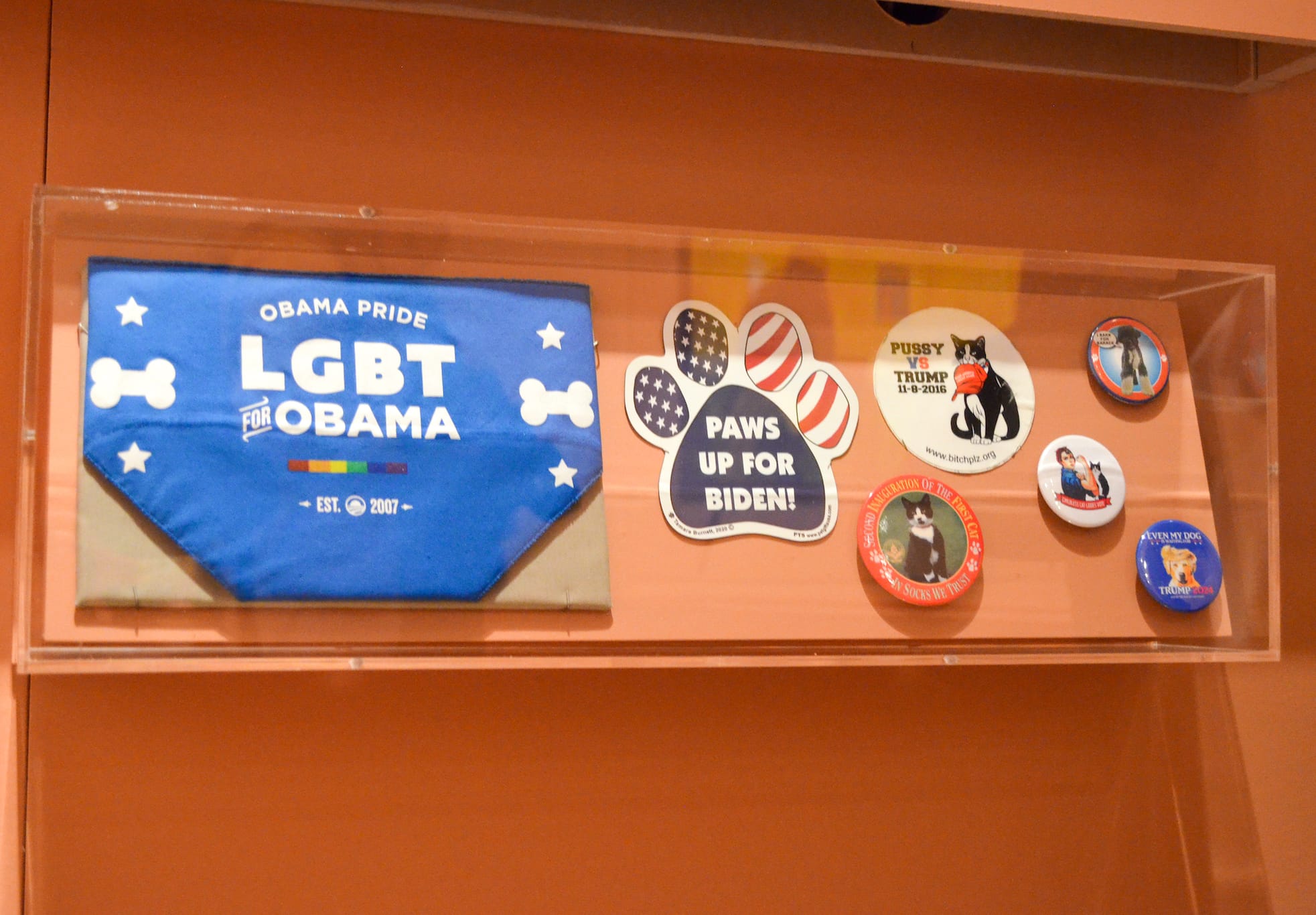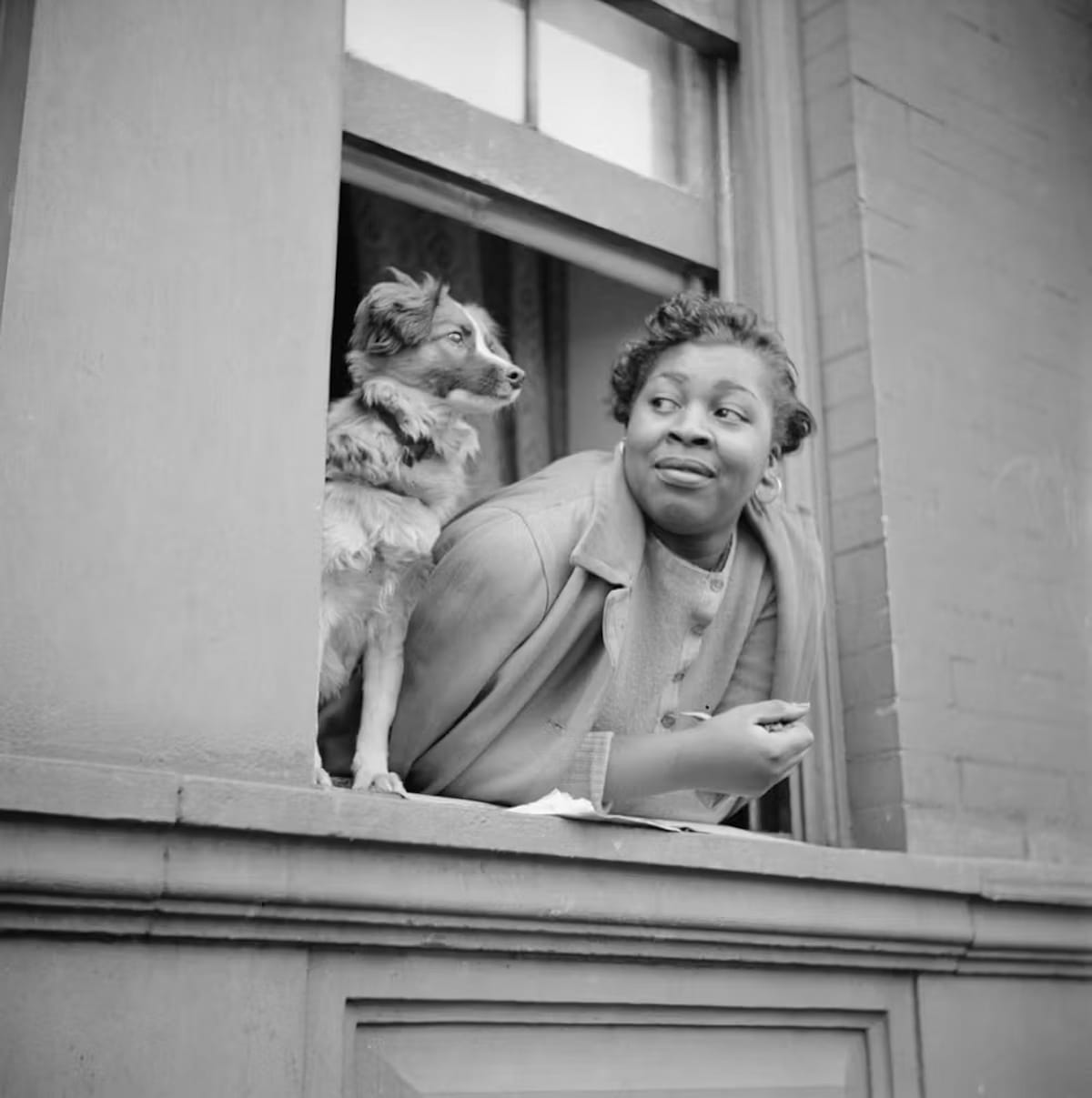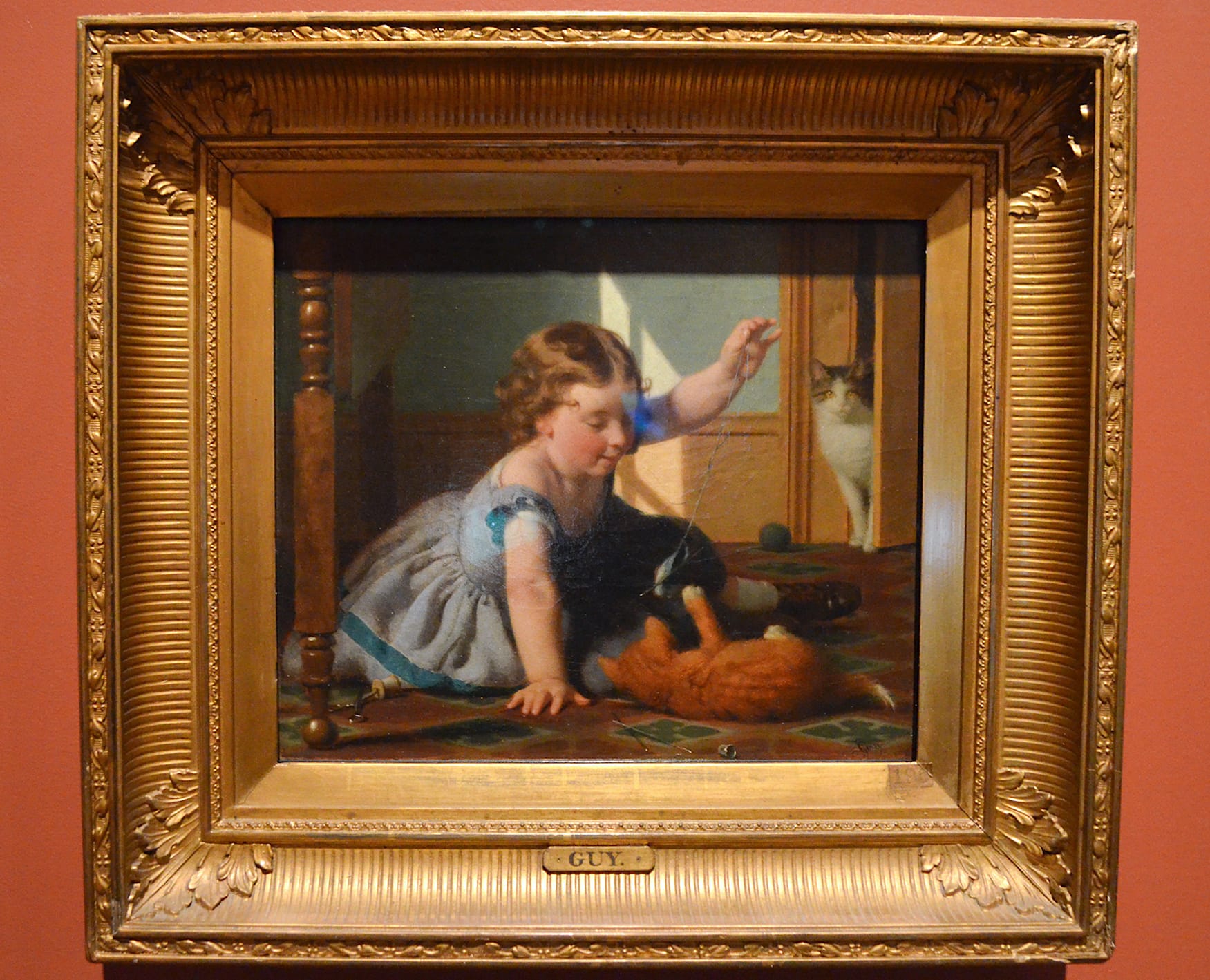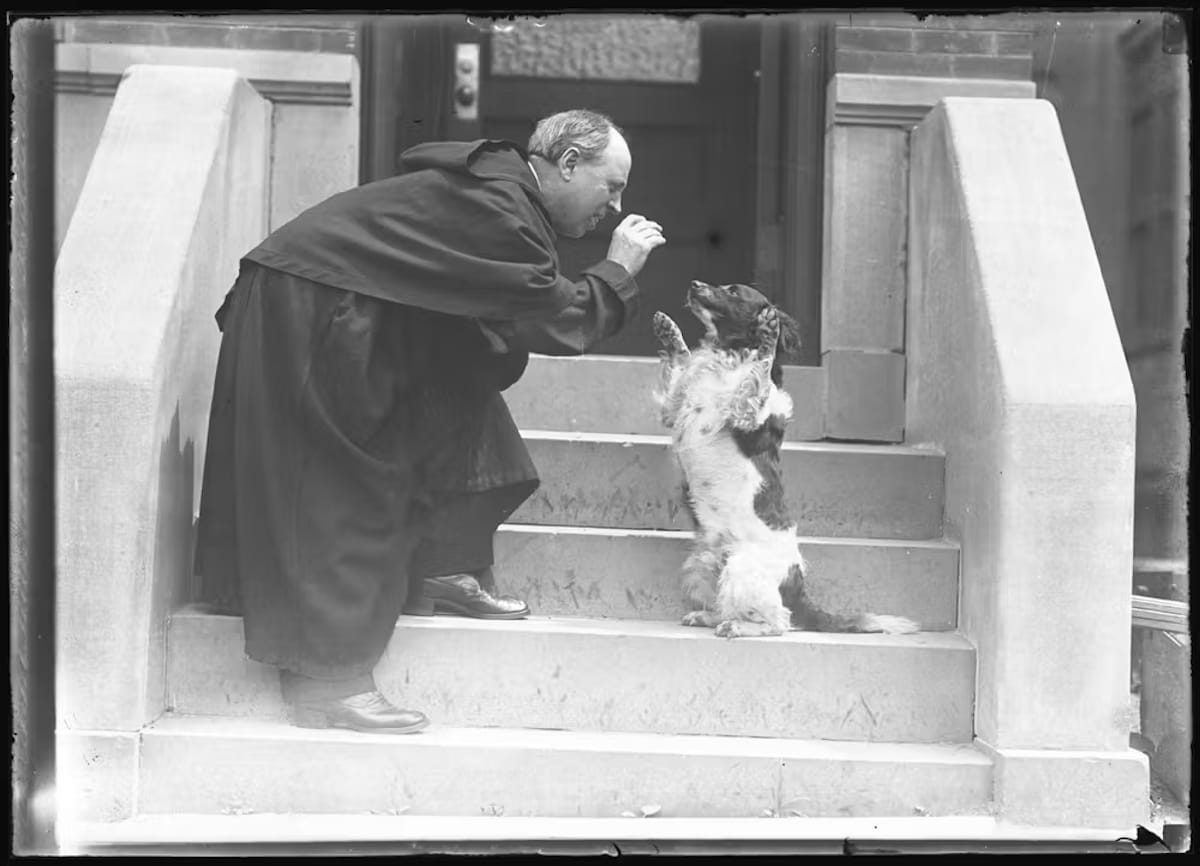The Charming and Strange History of New Yorkers and Their Animals
At the New-York Historical Society, a new exhibition chronicles the lives of pets and their owners since the 18th century.
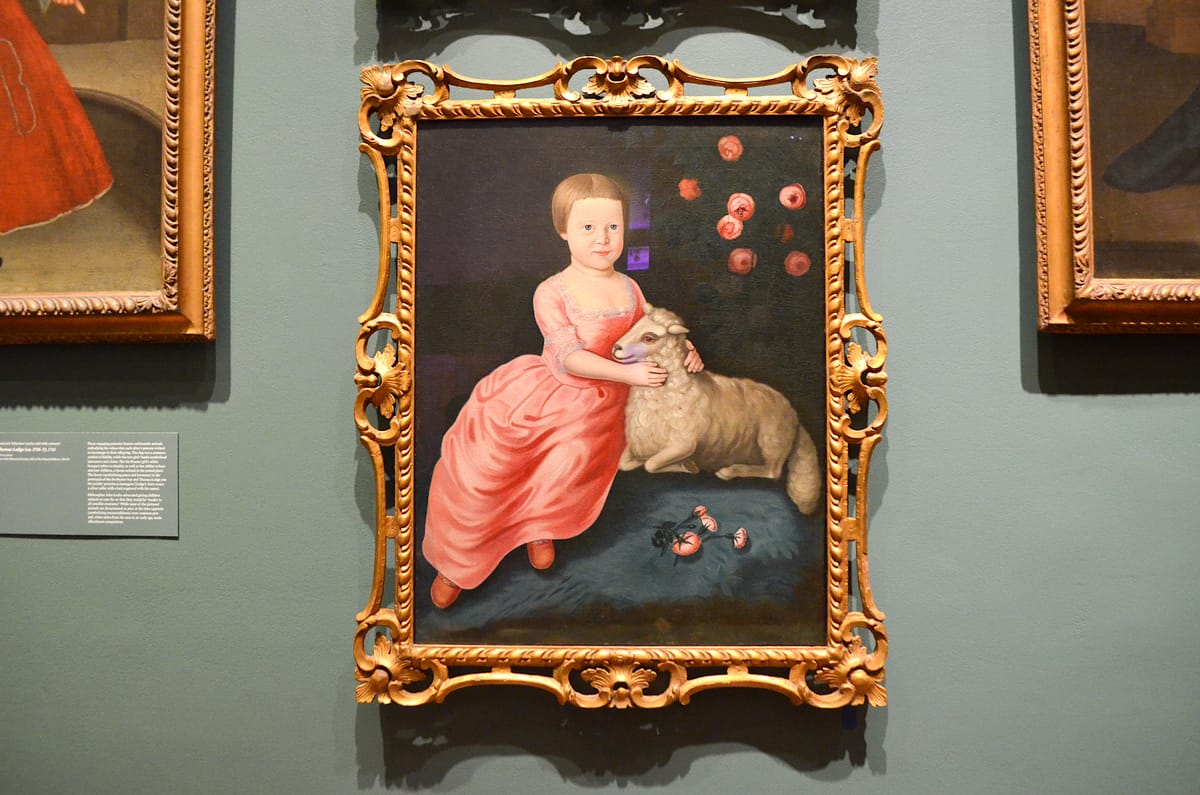
If you’re a fan of fictional character Charlotte York’s cocker spaniel Elizabeth Taylor, you might find the name of the New-York Historical Society’s new exhibition entertaining and even cheeky.
Pets and the City, which opened on October 25, traces New Yorkers' historical obsession with finding and keeping animals. The show arrives in Manhattan just as City Council Member Shaun Abreu proposed a bill that would allow residents to use paid sick leave to care for their pets.
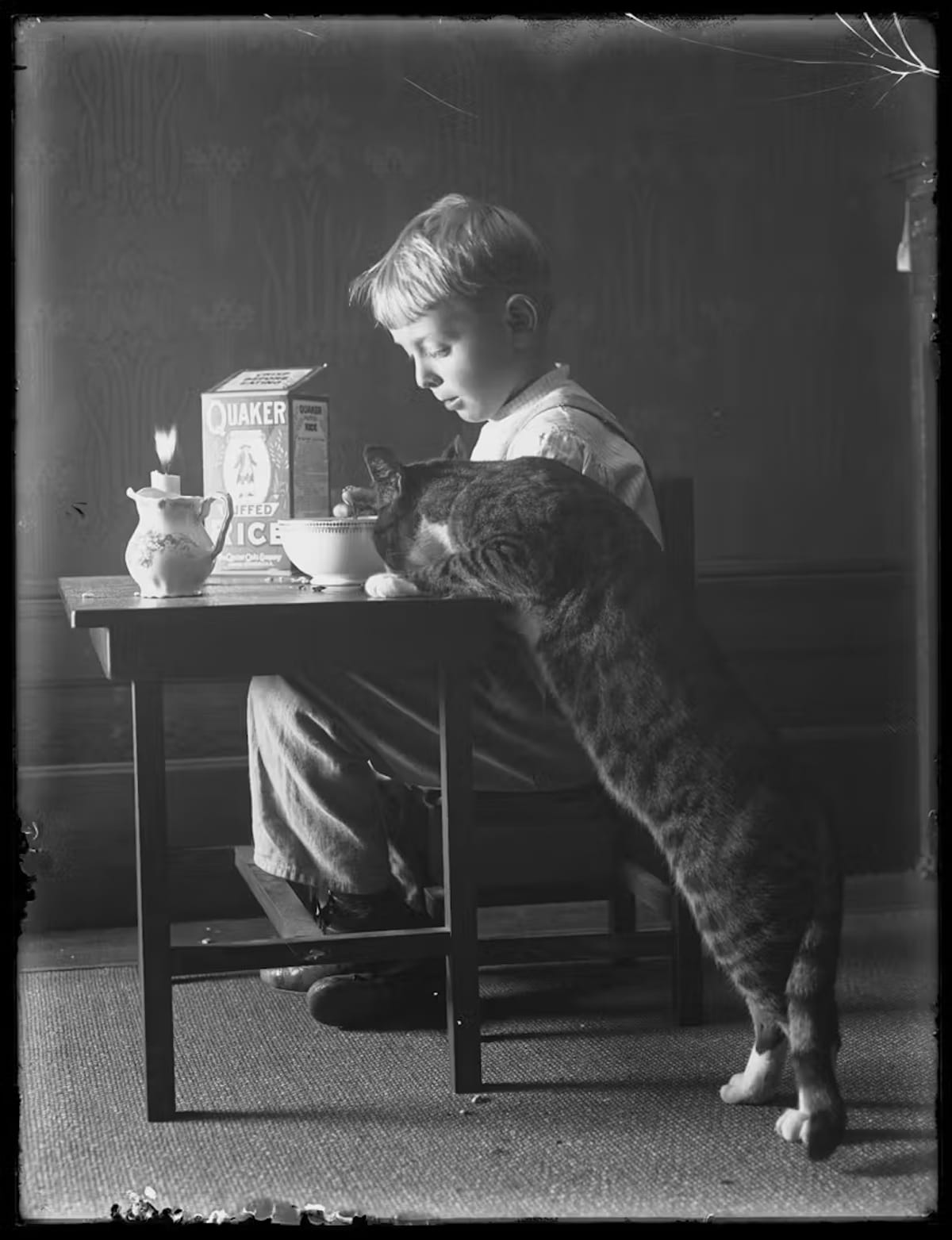
Roberta J.M. Olson, curator of drawings emerita at the New York-Historical Society, organized the show over three years, she told Hyperallergic. The exhibition, she said at a press preview, brings reprieve to visitors amid “the horror of the world today, the wars and inhumanity,” as it promotes American Society for the Prevention of Cruelty to Animals (ASPCA) Founder Henry Bergh’s idea that “men will be just to men when they are kind to animals.”
The exhibition begins in a small gallery space featuring works documenting interactions between animals and Indigenous people in the region. A large drawing by the Tuscarora artist David Cusick imagines a mythological Iroquois hunter with a deer and bear under his belt. On one end, a bronze sculpture by John Quincy Adams Ward generically titled “The Indian Hunter” (1860) is described on wall text as promoting a “romanticized depiction” of a young man and a domesticated dog. Across the room, encased in a glass box, a land deed from 1729 contains the signature of an unidentified woman, represented by a turtle icon.
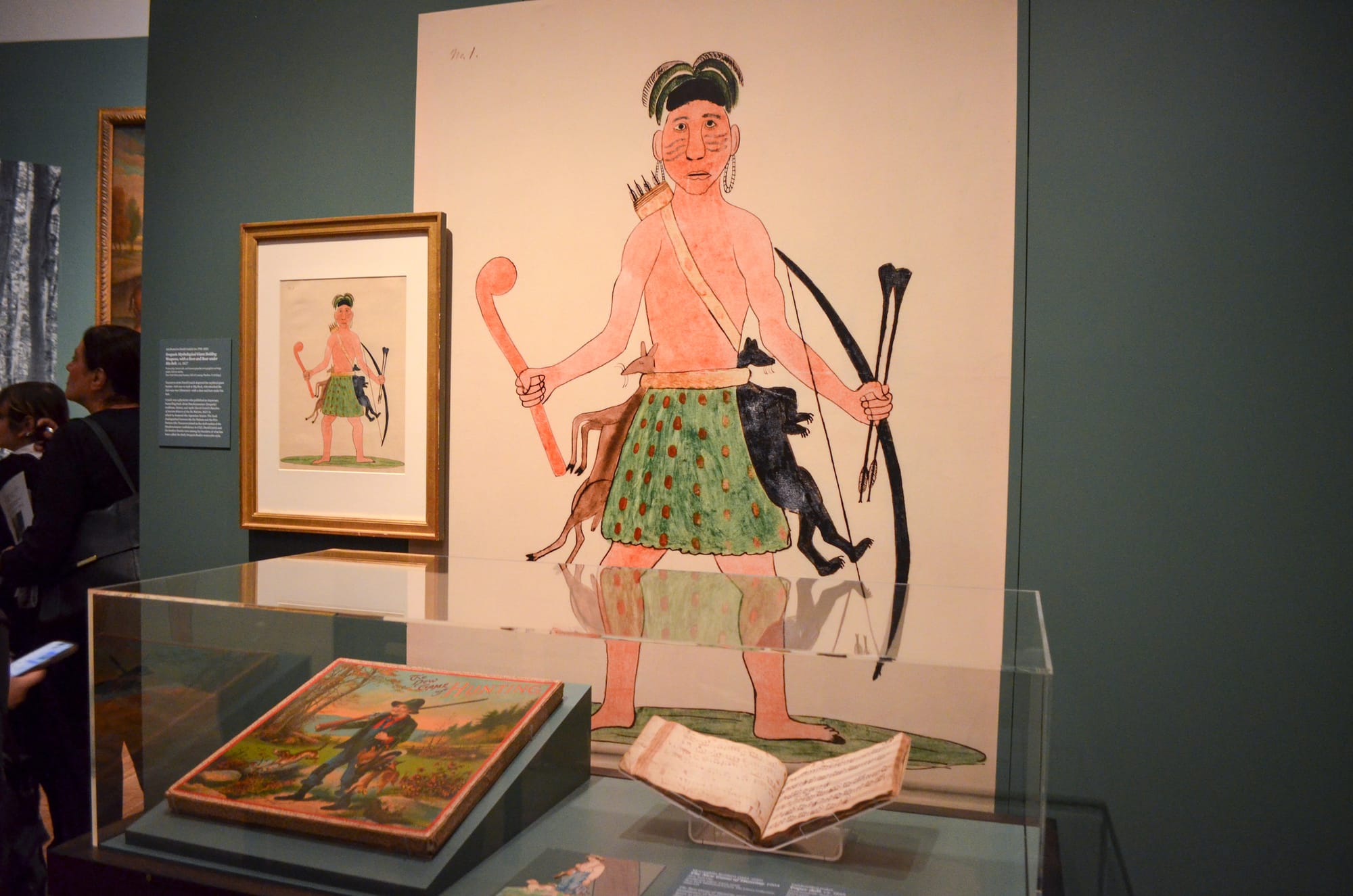
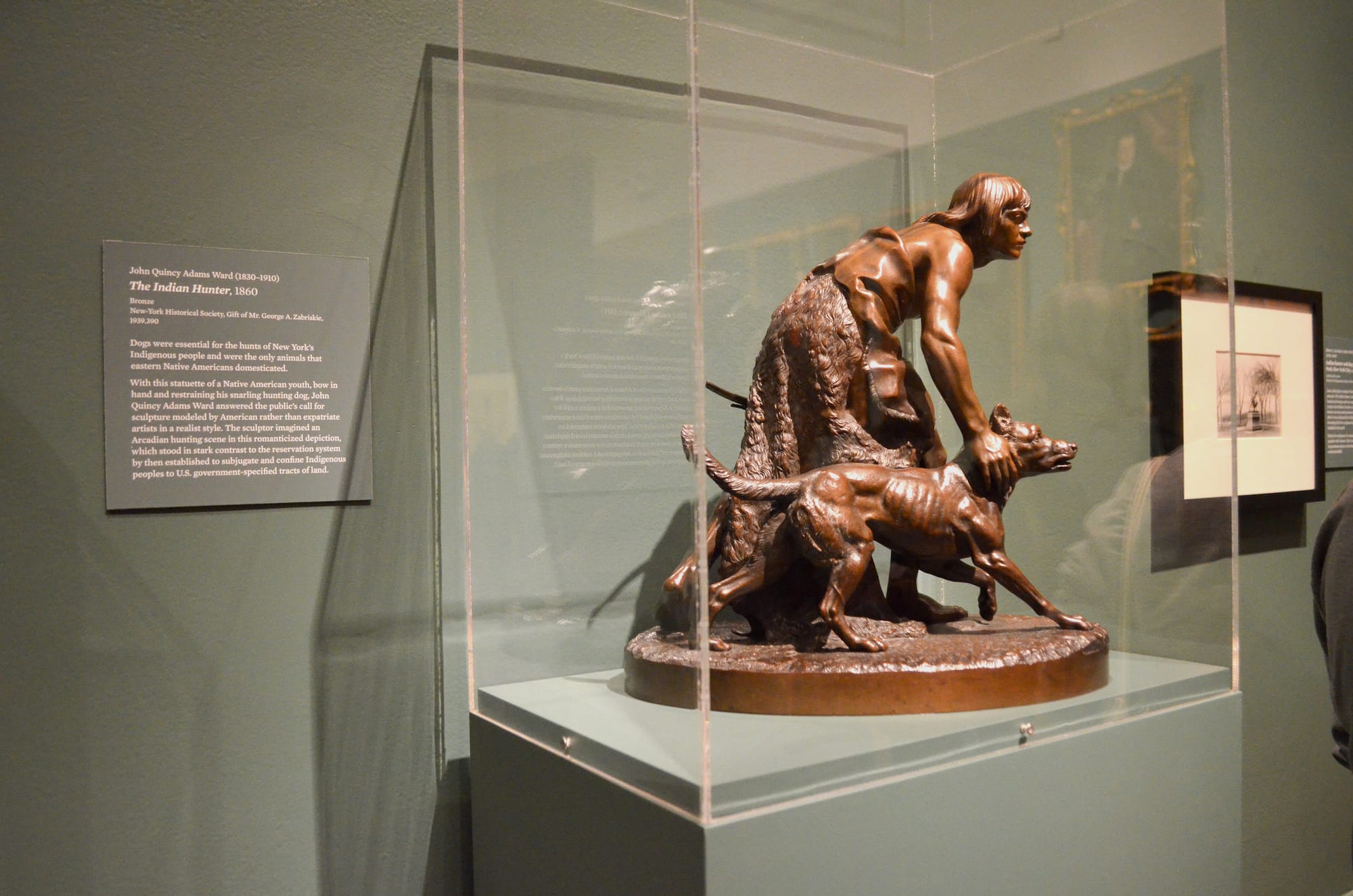
Capturing the stranger end of human-animal relationships, Brooklyn-born bird keeper and musician Emma Thursby, who successfully fought for permission to bring her domesticated Myna bird on a train from Buffalo to Utica in 1893, has her own multi-artifact display. “Miss Emma Thursby has permission to take into the oars a pet bird,” reads a letter from the Pullman Palace Car Company in a glass case.
Visitors will then encounter 18th-century portraiture of the children and pets of New York’s early settlers in the Dutch and English visual traditions. In these early works, children are portrayed with lambs and deer, which symbolized harmony and peace to emphasize the subjects’ moral righteousness, according to Olson. Further along in the gallery, Victorian portraits present more conventional renderings of children and kittens.


In a section entitled Pets at Work, World War I messenger pigeon Cher Ami gets his moment. A message carried 25 miles by the bird to the 77th Infantry Division of New York, which fought in France, sits in a glass case. Nearby, a plush Golden Retriever and portraits of puppies commemorate the organization Seeing Eye, which trains guide dogs for blind individuals.
A display of political merchandise invoking pets in elections — including a bandana that tries to amalgamate every progressive issue into a dog-sized collar reading “Obama Pride, LGBT FOR OBAMA" with a pride flag and dog bones — interrogates the use of pets in political campaigns.
In a strange exposition of dog “copaganda,” a pair of prints honor the K-9 unit of the New York Police Department along with accompanying walls text explaining that the dogs assist in the police force’s mission “to protect the lives of fellow citizens” by sniffing for drugs and explosives. Dogs are pictured smelling luggage and standing with officers.
Police departments’ implementation of K-9 units took off during the Civil Rights movement, and in some of the most infamous journalistic photographs of protests, police are shown unleashing German shepherds on Black demonstrators.
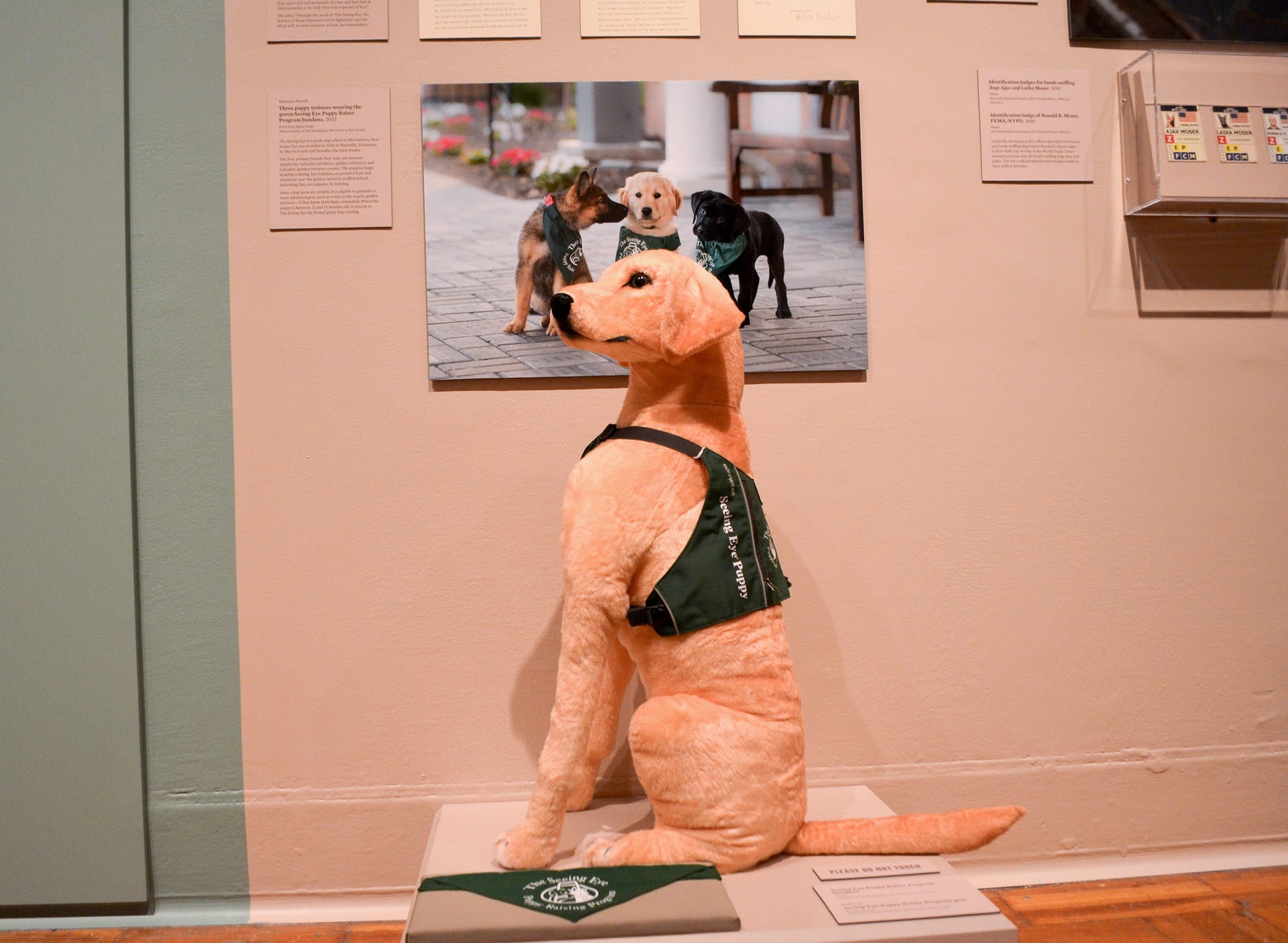
Perhaps the predecessor of today’s pigeon influencers, Anton van Dalen is pictured holding a pigeon in his documentary Anton: Circling Home (2020), which chronicles the pigeon coop he kept in his Alphabet City studio.
The exhibition highlights New York as a center of the animal rights movement, beginning in 1866, when Henry Bergh founded the ASPCA, the same year the state legislature passed the first law in the United States against animal cruelty.
Towards the final edge of the gallery space, there’s a photo tribute to Flaco, the eagle-owl who escaped the Central Park zoo and lived freely until he flew into a building in February, inspiring new legislation promoting bird-friendly construction.
Olson leaves visitors with a quote printed boldly on the wall near the gallery exit, taken from the children’s movie Secret Life of Pets (2016): “We’re dedicated. We’re loyal. We’re easily the best pet ever.”
